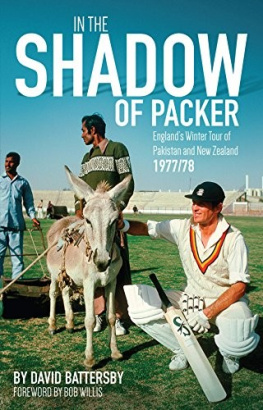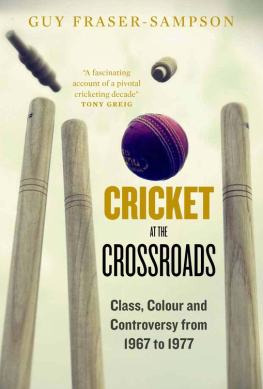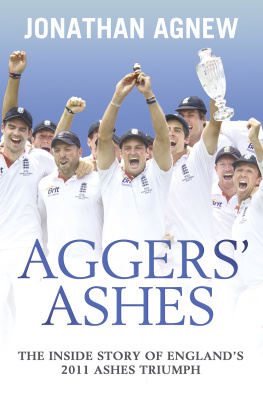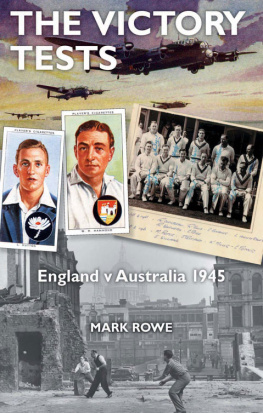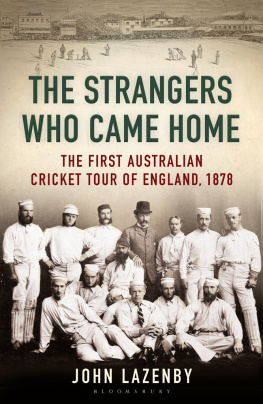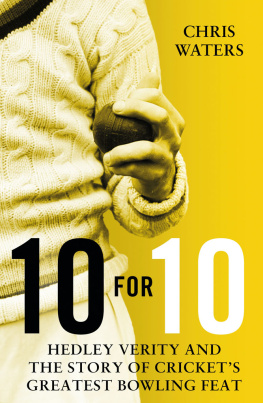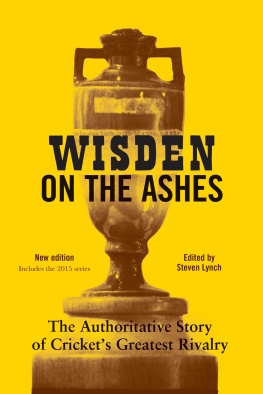It was while reading through some old cricket documents in the Marylebone Cricket Club Library that I discovered a forgotten perception of Don Bradman.
Immediately after his retirement, when Don became Sir Donald and accepted the plaudits for his cricket career, he was not the universally praised hero to whom we have become accustomed. In fact, by the early 1950s Bradman was the most controversial and divisive figure in the cricket world. It is not going too far to say that he was engaged in a bitter fight to redeem his reputation.
This image of Bradman re-emerged gradually, like a photograph being cleaned of layers of dust. I had read his retirement autobiography, Farewell to Cricket, which was published in 1950, two years after his poignant last Test innings. Had Bradman lived and retired today, I imagine that it would have been written in gracious receipt of the tributes to his greatness. But 1950 was a more candid time, and the curatorship of public image was left up to the individual. Bradman used Farewell to Cricket to release all his bottled-up desire to set the record straight.
Consequently, it is a book laced with a sour stridency that seems, from our historical viewpoint, both surprising and unnecessary. Why should the Don, of all people, have needed to fight so hard for his reputation? Immediately after his retirement, however, Bradman was many decades away from becoming The Greatest Australian. In 1950, he saw his legacy as a highly contestable matter and set about its zealous protection. No document gives as clear an insight into his motivations. Its all in his own words. No slight was too small for Bradmans memory. He never forgot how the New South Wales selectors snubbed him when, as a boy, he had travelled from the country to trials at the Sydney Cricket Ground. He never forgot how, when he took his first interstate tours, the senior men teased him as a bumpkin. He never forgot the merciless batting of the great England team of 192829, when, as twelfth man he never forgot that either he spent days in the sun picking Wally Hammonds cover drives out of the gutter. He never forgot the teasing from Englands spin bowler Jack White, who chided Maurice Tate for dismissing Bradman in his first Test: Hey, you got my bunny!
Bradman played in retirement as he had played on the field: for keeps. From its beginning, AngloAustralian cricket had been played as war by another means. There was never any gentlemens game, from the time W.G. Grace sneaked up to run out Sammy Jones while he was gardening the Oval wicket in the most famous match of all, the Ashes Test of 1882. By the 1930s, Bradmans success put Ashes cricket on an unprecedentedly hostile footing. His mathematical accumulation of 974 runs in 1930, when he hit White, among others, into submission, provoked Englands counter-reaction the infamous physical assault of Bodyline in 193233. Cricket wars, like real wars, are not discrete affairs with beginnings and ends; they flow into each other. After Bodyline, it is well known that Australias outrage ended the Ashes careers of its chief prosecutor, Douglas Jardine, and its weapon, Harold Larwood. Perhaps less well known is how the next Australian team to tour England, in 1934, was booed out of Nottingham when it threatened a walk-off after Larwoods partner Bill Voce bounced them. That Australian team, with Bradman again dominant, was described as the silent, sneering sixteen. Bodyline left both sides resentful: Australia for having suffered from it, England for having been de-fanged as a consequence of it.
Fifteen years and a world war later, writing his memoir, Bradman was still seething over Bodyline. He was also seething over the battles he had fought in South Australia, when he was imported from New South Wales to take over the state captaincy from the popular hero and legendary Adelaide sportsman Victor York Richardson. He was seething over his clashes with teammates when he became Australian captain in 1936: a quintet of senior men, all Roman Catholics Bill OReilly, Stan McCabe, Len Darling, Chuck Fleetwood-Smith and Leo OBrien had been carpeted by the Australian Board of Control for undermining him.
Bradman seethed, still, over the apotheosis of 1930s cricket brutality, Englands 903 runs for seven wickets at The Oval in 1938. Len Hutton batted nearly three days for 364, Bradman broke his ankle, and, in the last Ashes Test before the war, the Australians were ground into the Kennington dust. Four weeks later, Neville Chamberlain came back from his summit with Adolf Hitler in Germany and declared Peace for our time. In the deeper mood of cricket, just as in the deeper movements of people, there was a stronger pull towards hostility.
Years later, Bradman took out his greatest frustration on his former teammates and antagonists from the 1930s, such as Jack Fingleton and OReilly, who had become journalists critical of his actions. Worse than enemies, he saw them as apostates; his autobiography gave him his chance to bite them back. He missed no opportunity to vent at the personal spleen, naked and unashamed of Fingletons writing. Bradman lived by the rule, he declared, of You cant make people like you, but you can make them respect you. But can respect be forced? In Farewell to Cricket, the peerless English cricket writer Alan Gibson concluded, Bradman seemed to go through every slur cast on him during his cricket career, and reject them all. It was nothing less than a tirade.
Who was this angry man? Certainly not the Bradman we came to know in recent decades, when, having retired from a sometimes stormy life as a cricket administrator, he had become such an unquestionable Australian eminence that his vital statistics were in the questionnaire for applicants for Australian citizenship and his batting average comprised the post office box number of the Australian Broadcasting Corporation. By the time of his death, he was the nations shy grandfather, to whose suburban Adelaide home great men went to pay homage. We knew that Bradman had had his critics OReilly and Fingleton were well known, as were Ian Chappell and the protagonists of World Series Cricket but his record of accomplishment and service to the game surely placed him above all criticism.
This was not the real Bradman, however, at least as he perceived himself. By 2001, when he died five years into the prime ministership of John Howard, who idolised him, he might have felt satisfied that his reputation had been cleared of any taint. But Bradman never forgot his own time, and knew better than anyone that his final iconic status was a reward for longevity. He had outlived his critics, but their ghosts were fresher in his mind than in ours.
Australians are used to thinking of his 1948 team the Invincibles as having conducted a triumphal march through war-ravaged Britain. It was a tour that restored crickets supremacy as a popular entertainment, and resuscitated the mother countrys battered morale. It was a gift from the triumphant new world to the shrunken old, from the coming Pacific Century to the fading Empire. Our boys delivered food parcels and speeches, played joyfully and won some of the most dramatic matches ever staged. Once they scored 729 runs 729! in a day. Bradman went out, truly, in a blaze of glory, and his famous duck at The Oval, stranding him with a Test cricket average of 99.94, was just a minor flaw, Japanese-style, to emphasise the perfection of the whole.
This, at least, is the orthodox view. But when I went back to the original documents, a very different picture emerged. Among Bradmans teammates, those inimitable golden boys, few spoke of the 1948 tour as their favourite. Neil Harvey, the teenaged baby of the tour, said that of his four Test tours to England, his most enjoyable by far was his last, in 1961 under Richie Benaud. Arthur Morris, whose batting in the 1948 Tests eclipsed even Bradmans, preferred the 1953 tour under Lindsay Hassett. Hassetts happiest tours were in 1938 when he was a prankish youngster and 1953 when he was captain, but not 1948. The famously good-natured Bill Brown said he gained more enjoyment out of his two Ashes tours in the 1930s than in 1948. Keith Miller, after the 1948 tour, bowled bouncers at Bradman in the great mans testimonial match and was dropped from the next Australian team, which toured South Africa in 194950. Bradman was one of the selectors responsible, but blamed the others. When Miller approached another selector, Chappie Dwyer, and informed him that Bradman denied any part in the decision, Dwyer replied, Did the little say that? In the early 1950s, Bradman was involved in the murky blacklisting of another Invincible, Sid Barnes, who effectively sued the Australian Board for defamation. Bradman was widely believed to be behind Barness ostracism, though the fall was taken by Keith Johnson, a loyal Bradman retainer who had been the manager of the 1948 tour.



